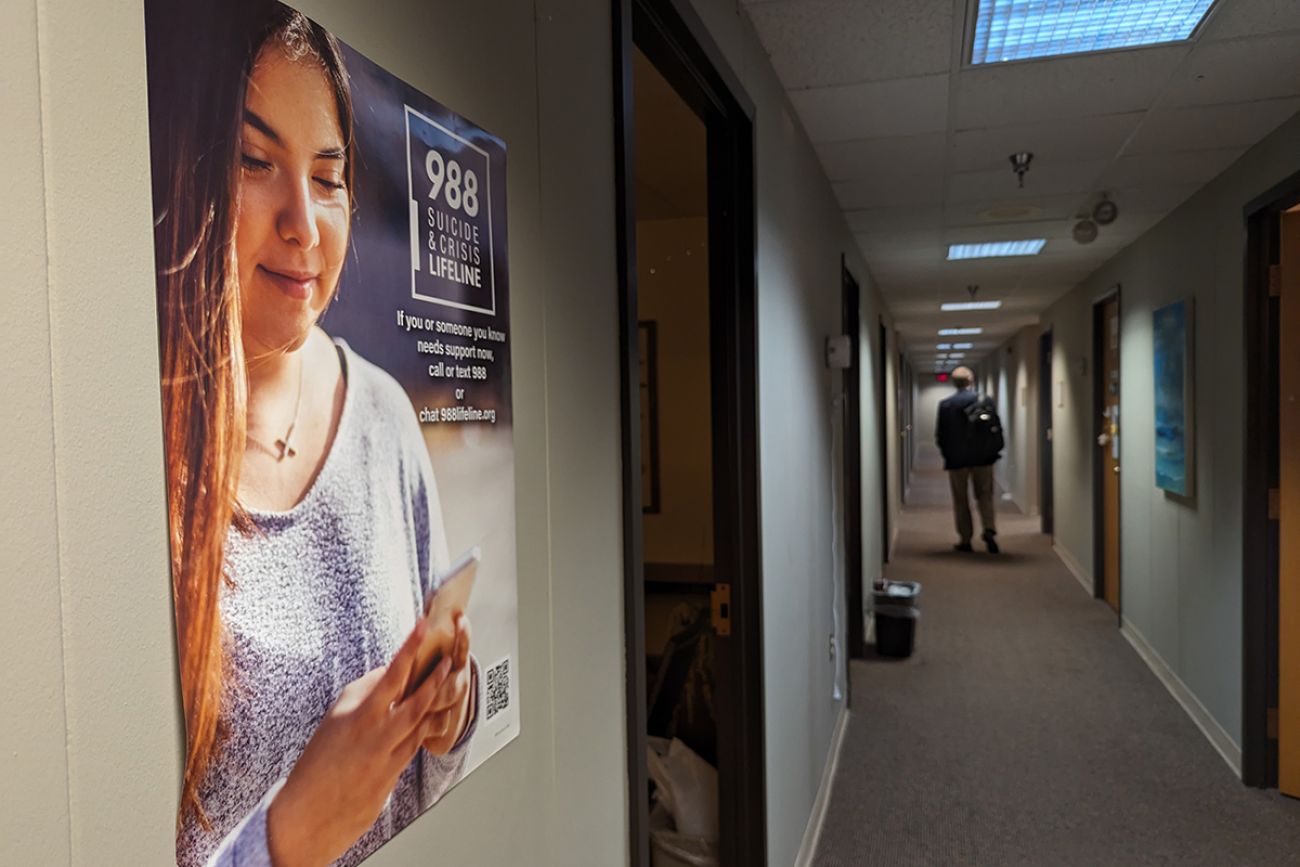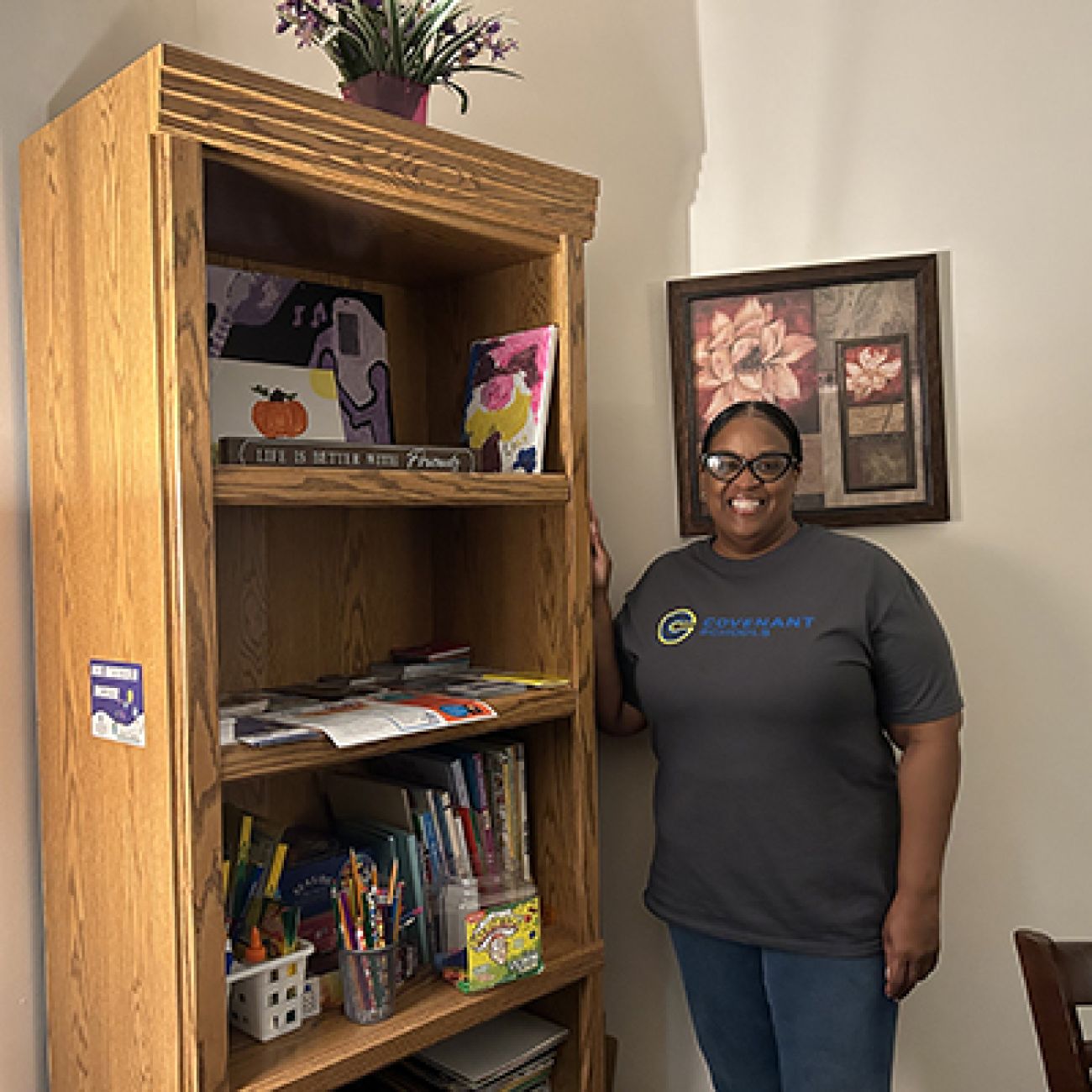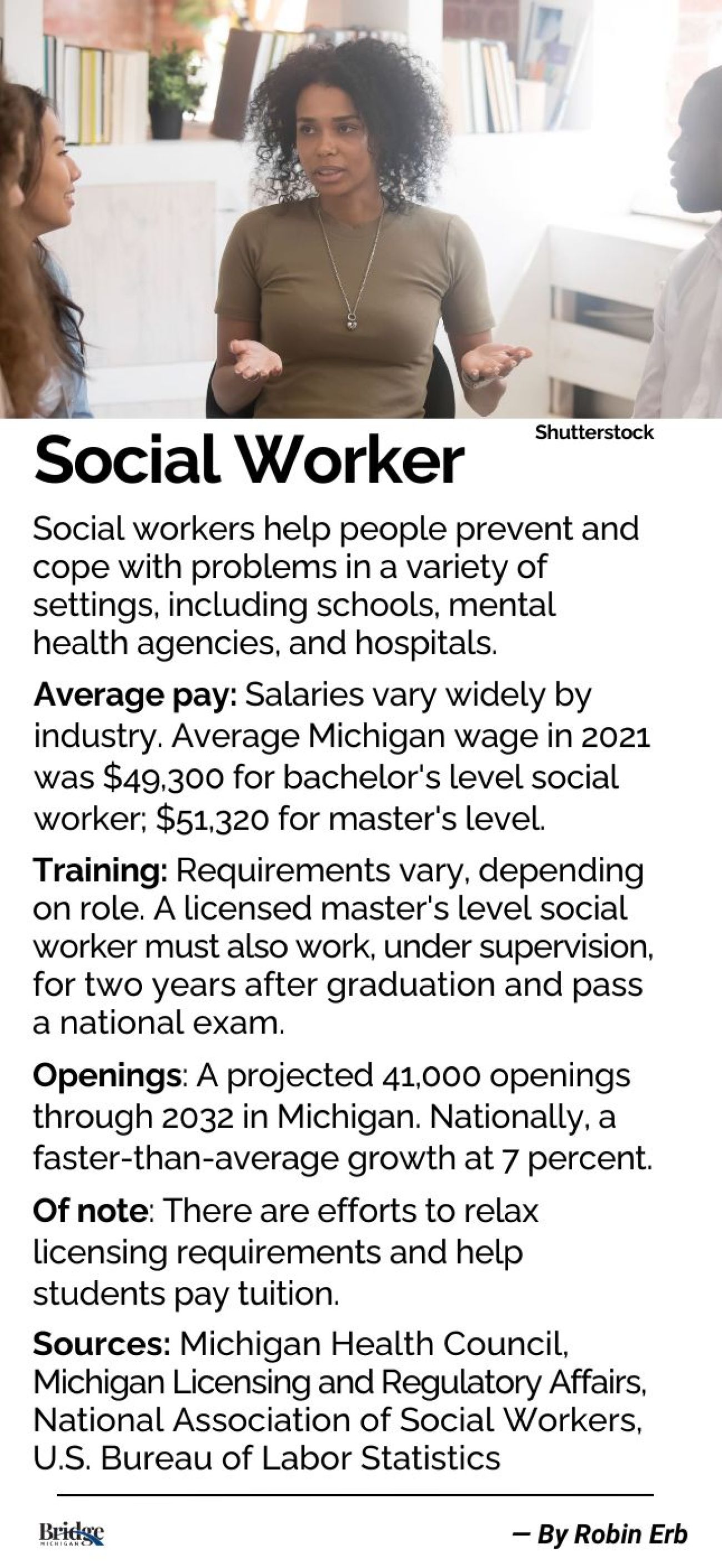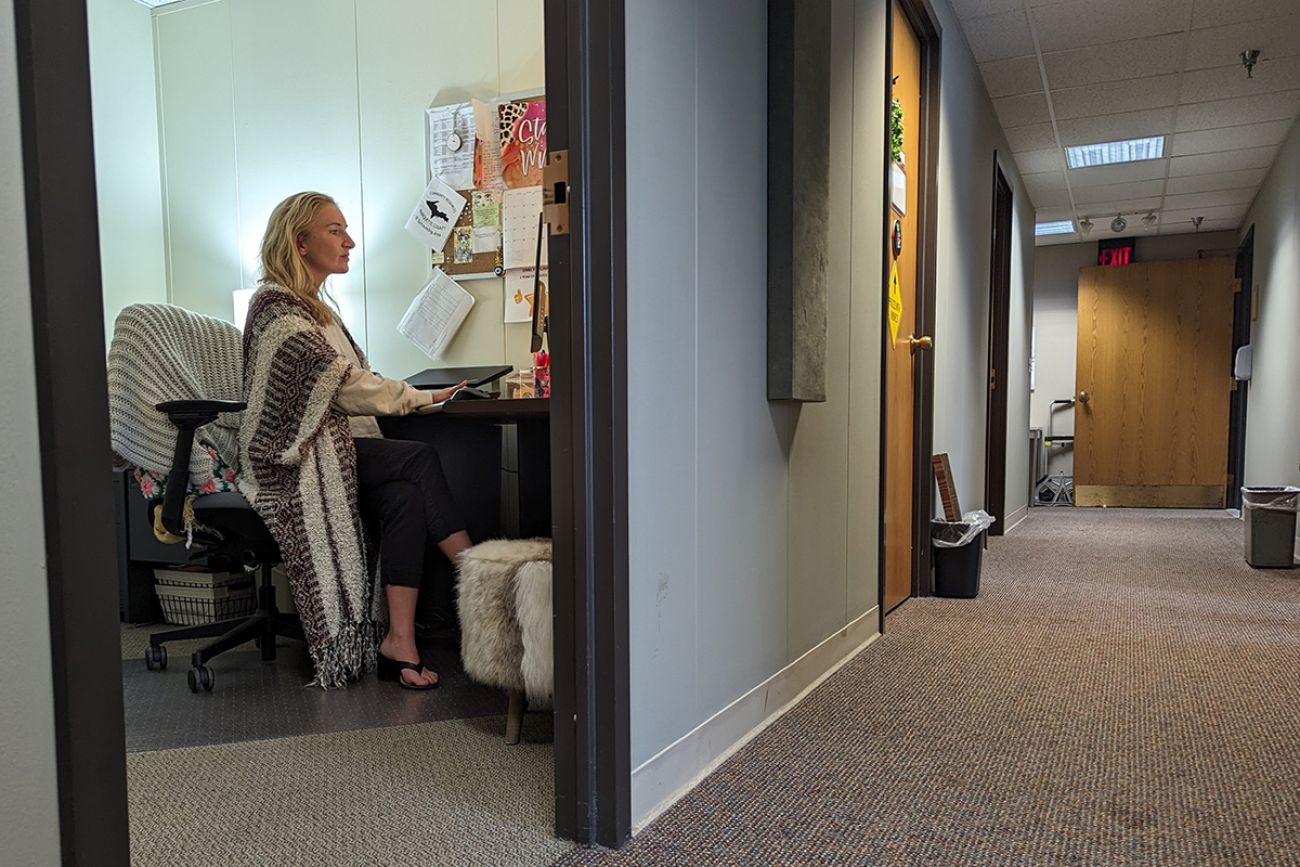In Michigan mental health crisis, a tug-of-war over too few social workers

- Social workers are in short supply throughout Michigan even as demand increases
- Some mental health agencies say a state influx of funding for schools is leading to high turnover
- Among the solutions: changing licensing requirements
MARQUETTE — Nearly two full years — 728 days, to be precise. That’s how long ago Pathways Community Mental Health, headquartered here in this Upper Peninsula city, posted its “help wanted” for a social worker in its Escanaba branch.
Chad Hale shook his head last week, sitting at his desk less than a half-mile from Lake Superior, glittering in the mid-afternoon sun. No one has even applied, said Hale, chief operating officer of this agency.
And that’s just one of the empty positions.
The shortage is so bad that at least three of the agency’s existing social workers pile into the agency’s cars nearly every day of the week to make the 67-mile journey south to sit in therapy with clients in Escanaba. It’s “grotesquely expensive” for the agency, Hale said.
More importantly, he said, the situation short-changes those in need — residents with psychiatric disorders, depression and severe anxiety.
“When (a therapist) leaves and someone else comes in, you're starting over,” said Hale, who also is a licensed master’s level social worker. “There’s no way around it being a setback.”

While a shortage may be most pronounced in rural Michigan, it’s a problem everywhere, with too few social workers in schools, too few therapists in mental health, and too few case managers and therapists in hospitals.
That means those who are most in the need of the most help often go without — and schools increasingly face more disciplinary issues that aren’t easily resolved, experts say.
“It's resulting in suspensions. It's even resulting in expulsions. It's resulting in parents being called to pick up their kids. Really, it's just devastating,” said Marcie Lipsitt, co-chair of the Michigan Alliance for Special Education.
This week alone, she argued alongside a parent with school officials who offered a boy less than an hour a week with a social worker, even though he has severe autism and is nonverbal and disruptive.
While the situation may be bad in classrooms, it’s worse for mental health agencies, who say social workers are lured away to schools because they offer more predictable hours, summers off and, often, better pay.
Worker shortage
“Here's your choice as a social worker: You can go work in a school setting — treating children who have mild to moderate conditions and (possibly) make quite a bit more money,” said Dan McKinney, CEO of Hiawatha Behavioral Health, an agency that serves about 1,200 clients in three eastern Upper Peninsula counties.
Or, he said, “you could go to the mental health system and work with people who have very serious conditions, are much more challenging and deal with much, much more difficult things.”
At Hiawatha, a master’s-level social worker starts about $60,000 per year, but McKinney said jobs elsewhere, including those in a hospital, pay closer to $90,000.
Michigan schools are attracting social workers, in part, because of the recent state budget that allocated $101.5 million for child and adolescent health centers and intermediate districts to expand mental health programming, compared to $21.5 million for fiscal year 2019. State schools also received $6 billion in federal pandemic funds they could use to expand mental health programs.
The money “paved the road very smoothly for that migration to happen,” said Gregory Nyen, superintendent of Marquette-Alger Regional Educational Service Agency.
In a few years, the agency has grown its social worker staff from fewer than five to about a dozen today. Five of those social workers left their roles at the mental health agency down the road, Nyen said.
At least four more Pathways social workers have taken jobs at the Delta-Schoolcraft intermediate school district in Escanaba, said Hale of the Pathways group.
A fight for services
That struggle to find enough social workers leaves families fighting for services in an overwhelmed, understaffed system strapped by a shortage of therapists and case managers — roles that social workers fill.
Statewide, there were at least 574 open positions for social workers for every month for a full year ending in July — and those are just the ones that have been posted online, said Michelle Wein, research director of the Okemos-based Michigan Health Council.
Michigan has about 31,000 licensed social workers, according to the National Association of Social Workers, but the state must add more than 41,000 through 2032, the council predicted.
In Redford Township in southeast Michigan, Maria Pena’s family is struggling because of the social worker shortage.

Pena said her 11-year-old daughter is a child of extremes. She’s a talented painter, sketch artist and pianist who writes her own melodies, including one this year she titled “Melancholy.” But she’s also a child who has held a knife to her own throat, been terrified of a mysterious man who said is coming after her and begged — weeping — that her mother kill her.
Related:
- Lack of school counselors hobbles Michigan college enrollment efforts
- Munson to trim inpatient services at rural northern Michigan hospitals
- Michigan has more job openings than workers. Are retirees the answer?
- Delayed medical appointment? In Michigan, the problem may not be the doctor
- Childcare is a critical job, with a critical worker shortage in Michigan

Medications, knives, cleaning materials are locked away, and the family eats with wooden utensils so no one gets hurt, Pena said.
Social workers provide both therapy and case management for children, and Pena and other families feel that a shortage of workers means too few hours, too few days, of care.
When their child is discharged too soon from care, they say, that only spins the revolving door faster.
“It’s always the same thing: ‘There aren’t enough staff. There aren’t enough social workers. There aren’t enough services,’” said Pena, whose daughter is now housed at the Hawthorn Center in Wayne County, the state’s psychiatric hospital for children.
The right social worker
While schools may have the money to hire more social workers, district leaders also say there aren’t enough workers either — a reality that, according to the mental health advocate Lipsitt, has allowed mental health problems for children to spin out of control with “devastating” results.
Traditionally, school social workers have almost exclusively worked with students who receive special education services, L’Anse Creuse Public Schools Superintendent Erik Edoff told Bridge.
“But post-COVID, the needs are so much greater,” he said.
So while L’Anse Creuse has budgeted for 19 mental health positions, it has filled 12 of them, he said. He is trying to get creative by hiring bachelor-level positions that can help with some aspects of school social work.
“Unfortunately, districts can’t help but be competitive with each other because the number of people for these positions is so limited,” Edoff said.
Students are still getting the services but could benefit from more time with a mental health worker, Edoff said, and more workers would mean lower case loads per worker.
It’s a cycle, he said, where “further stress and demand in their job” can lead to “burnout” or workers considering other jobs.

And social work is “very fluid,” said school social worker Christa Lindemer at the Washtenaw Intermediate School District. She works with students who receive special education services.
Theoretically, a caseworker may have 20 students in their caseload and is expected to spend 20 minutes with them each week. Realistically, she said, a student may have other concerns that need to be addressed first.
“It’s not just about finding a social worker, it’s about finding a social worker who is a good fit that wants to work in a school setting,” said Covenant Schools Superintendent Terrence George. His district includes three Detroit campuses, a Grand Rapids campus and Highland Park campus.
At Covenant Schools, where some students are homeless, George said he is “ecstatic and a little bit nervous” now that he has a social worker in each of the five schools. He worries the supply of mental health workers outpaces the demand both in schools and other settings.

Social worker Darlene Coleman joined the district’s central campus in December 2021. She supports special-education students, analyzes student mental health screeners and leads group sessions including one on grief.
She estimates that 90 percent of her students have experienced some sort of loss, including a loved one’s death from COVID or violence.
“Students are allowed to come to my office at any time to take a break, this is a safe space for them,” she said.
Coleman also has to be ready to pivot quickly working, for example, to ensure a student is safe and receives medical treatment if she learns they are self-harming.
Angela Gardner-Street, president of the Michigan Association of School Social Workers, said pivoting when students are in crisis is just one part of the demanding job.
Social workers address the students in crisis, but then must still ensure their special-education students receive the services outlined in their individualized education plans. If they don’t, the school could be breaking federal disability laws.
Additional pressures further stretch the workforce, including the growth of online therapy, a greater demand for therapists and case managers in hospitals, nursing homes and community agencies.
Just last year, the National Academies of Sciences, Engineering, and Medicine called for at least one social worker in every nursing home, no matter what size.
“There are so many opportunities for social workers, but there are not enough graduates,” said Kathy Dollard, psychologist and director of behavioral health for the Midland-based hospital system, MyMichigan Health.
Moreover, federal policy and Michigan's own rules might be strangling its ability to get social workers in position.
Insurance often reimburses for health care services only if it’s a licensed, master’s level social worker doing them — making it tough to employ social workers without those credentials, said MyMichigan’s Dollard.
In Michigan, that license requires working under a supervisor for 4,000 hours — more than most states, according to Duane Breijak, executive director of the Michigan chapter of the National Association of Social Workers.
Biased testing, licensing?
The state also requires a national test for social work licenses — a test that has come under fire for being racially biased, possibly limiting the number of Black social workers.
Last year, the Association of Social Work Boards found that first-time white test-takers passed about 84 percent of the time, compared to first-time Black test-takers, who passed just 45 percent of the time.
That’s because the multiple-question test is formulaic, failing to account for the nuances of real life, said Sheryl Kubiak, dean of the Wayne State University School of Social work and co-chair of the National Association of Deans and Directors of Schools of Social Work’s task force on the licensure exam.
When Illinois eliminated the testing requirement last year, it added 3,000 new social workers in six months, compared to the 421 new ones during the same period the previous year, according to the Illinois chapter of the national social worker association.

Kubiak, the National Association of Social Workers, and others are asking Michigan to drop the test requirement, too.
Meanwhile, state Rep. Rep. Felicia Brabec, D-Pittsfield Township, a practicing clinical psychologist and chair of the Michigan House Subcommittee on Behavioral Health, is trying to require schools to have at least one school counselor for every 250 students to students with academic and mental health concerns.
While it supports the “intent” of the bill, the state’s education department sees it as an “unfunded mandate” that would cost $512 million.
After all, 340 of the state’s estimated 800 school districts do not have a single counselor, Sheryl Kennedy, the department’s education liaison, told the legislative committee last month.
In addition to examining Michigan’s licensing requirements, Brabec wants more state funds to help workers pay back student loans. A school social worker, herself, years ago, Brabec said she had to pick up coaching jobs to make ends meet.

Still, nearly everyone agrees: Those who are drawn to social work were drawn there for a purpose grander than a paycheck.
Back in Marquette last week, that’s what kept social worker Emily Richards, 26, in her office at Pathways, even as the building emptied out of most other workers at 5 p.m.
She was wrapping up paperwork after another day of working with people with developmental disabilities.
“I work with the most wonderful people,” she said. Short staffing? Yes, it’s a problem, she acknowledged, “but I love it. It honestly doesn’t feel like work most days.”
Michigan workers vacancies
In this occasional series, we examine the scope of critical worker shortages in 2023, from doctors and police officers to math teachers and social workers. To view more stories in this series click here.
See what new members are saying about why they donated to Bridge Michigan:
- “In order for this information to be accurate and unbiased it must be underwritten by its readers, not by special interests.” - Larry S.
- “Not many other media sources report on the topics Bridge does.” - Susan B.
- “Your journalism is outstanding and rare these days.” - Mark S.
If you want to ensure the future of nonpartisan, nonprofit Michigan journalism, please become a member today. You, too, will be asked why you donated and maybe we'll feature your quote next time!








